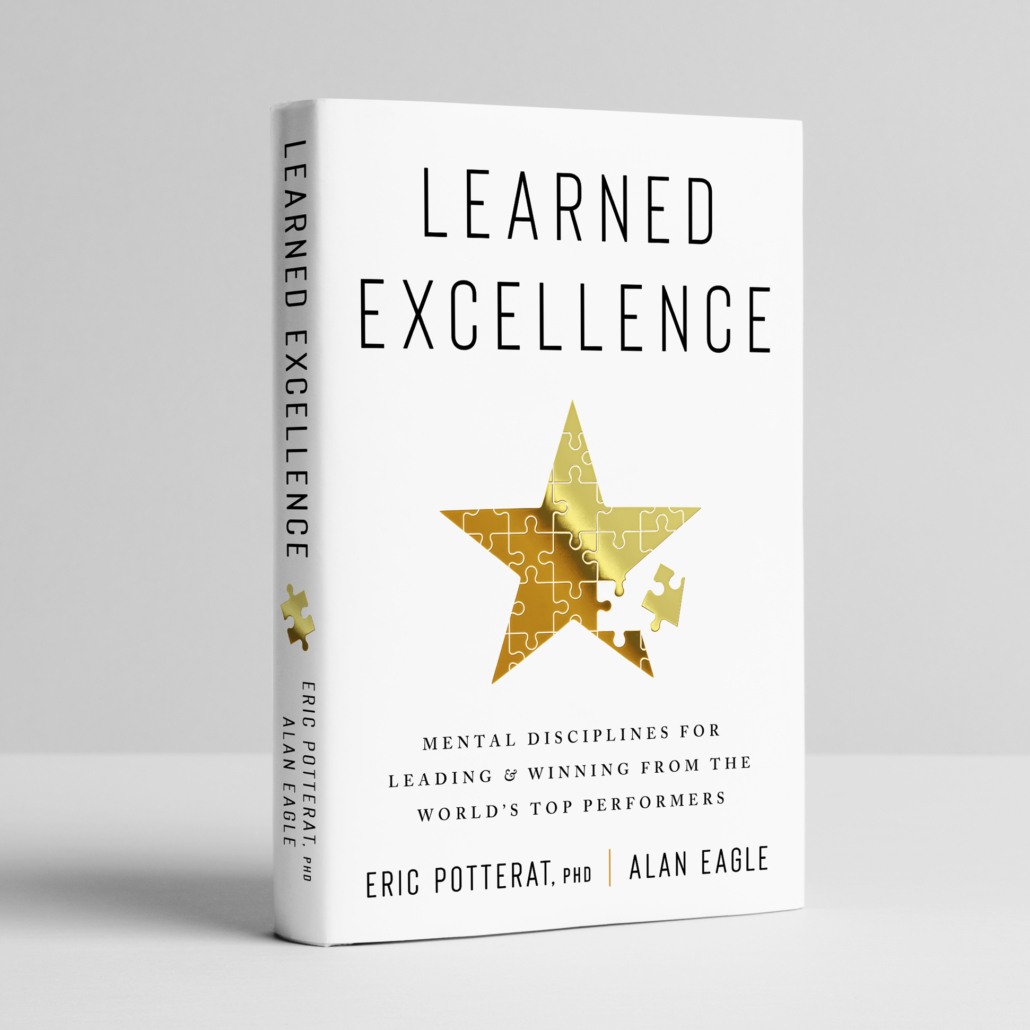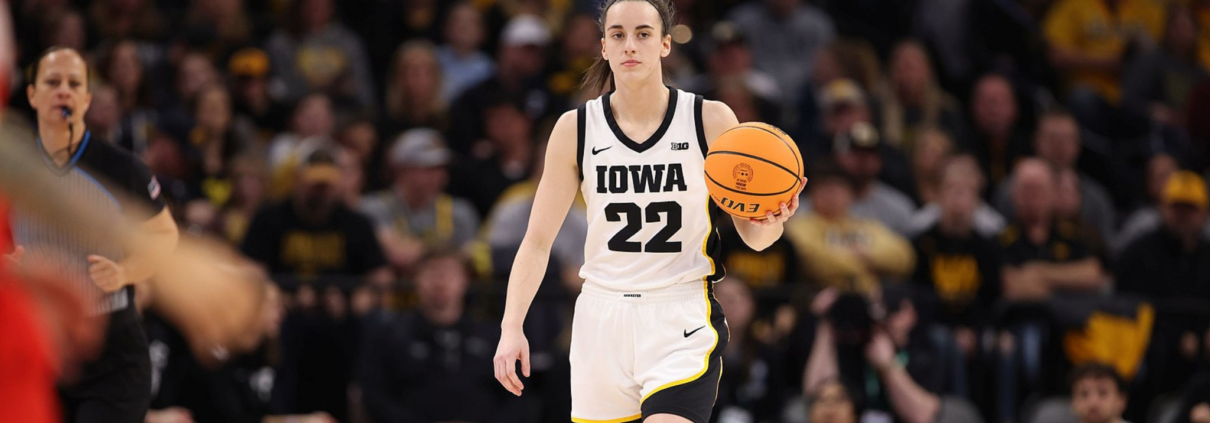The secrets to optimizing your brain
Brains are unlike any other organ in the human body because they’re constantly changing, constantly getting better at what they do. This process happens naturally for just about all of us. A select few of us can learn how to accelerate it even more.
This process, the act of optimizing cognitive performance, is something that many of the world’s top performers have mastered. Elite military operators, Olympic medalists, big wave surfers, neurosurgeons, cliff divers, first responders, Cirque du Soleil acrobats, professional athletes and coaches, Fortune 500 business executives, and CIA analysts are among those who have mastered this skill.
In his book, Learned Excellence: Mental Disciplines for Leading and Winning from the World’s Top Performers, Dr. Eric Potterat dives into this phenomenon in a big way.
The book was scheduled to debut this week.
Dr. Potterat, a clinical and performance psychologist, certainly has had first-hand experience working with elite humans. He retired as a commander from the U.S. Navy after 20 years of service, during which he helped create the mental toughness curriculum used during Navy SEALs BUD/S training. Dr. Potterat then spent several years as the director of specialized performance for the Los Angeles Dodgers. He also has worked with Red Bull athletes, the U.S. Women’s national soccer team, the Miami Heat, and numerous Olympic athletes, first responders, business leaders, and NASA astronauts.
Based on this experience, Dr. Potterat says in his book that top performers dominate across a wide variety of fields. He adds that all these leaders have something in common: When they are at work they know how to think clearly, stay focused, and shrug off setbacks under very high levels of stress. He notes that while these elite humans might have superb physical and intellectual traits, but it is the stuff going on above the neck and between the ears that makes them excellent.
Put differently, Dr. Potterat notes that for top performers, such as University of Iowa basketball sensation Caitlin Clark, the difference between settling and achieving, between good and great, between contentment and fulfillment, is based entirely on their mental approach.
All these leaders have something in common: When they are at work they know how to think clearly, stay focused, and shrug off setbacks under very high levels of stress.
– Eric Potterat, Ph.D.
He goes on to say that this approach isn’t innate; it is 100% learned. He states clearly: The world’s top performers weren’t born that way, they learned how to live excellently.
“Like a kid in a candy store, after years of working with these individuals, I started to see some themes that just started to kind of come off the proverbial page,” Dr. Potterat told BrainWise. “No matter how excellent these top performers were in their field, discipline or craft, they were generally, to a man and to a woman, doing roughly the same things.”

Once Dr. Potterat was able to organize his thinking, he put together a list of mental toughness techniques that are keys to optimizing performance. This list isn’t only observational; it’s an aspirational roadmap for how the rest of us might want to consider trying to get the most out of our brains in the future. Here’s a peek at 11 of the techniques on the list.
- Define an identity
- Manage mindsets
- Develop pre- and post- post-performance routines
- Practice visualization
- Set goals—and share them
- Break down tasks
- Black-box hard thoughts
- Be ready with Plan B
- Leverage steady breathing
- Conduct a ‘post-mortem’
- Develop an ecosystem
1. Define an identity
The strongest characters have a strong sense of self. Dr. Potterat says it’s important to think long and hard about what you value the most in life, and how you are making decisions based on those values. Alignment will set you up for success; misalignment will distract you and make the journey harder.
2. Manage mindsets
Everyone needs to go into a particular situation mentally prepared. For Dr. Potterat, maintaining a growth mindset is key—he specifically references the work of psychologist Carol Dweck as an inspiration here. He also notes that top performers thrive on positivity; the very best see setbacks as challenges instead of threats. Finally, Dr. Potterat noted that elite performers have separate mindsets for every role they play: professionals, parents, hobbyists, and more. According to Dr. Potterat, this mindset shift prevents them from bringing “residue” from other roles into the one they are presently in. One example he likes to give: While Navy SEALS approach their work with the mindset of being relentless and gritty, they know to engage in their marriages and friendships with a softer touch. He adds that an athlete has a competitive mindset within that role, but shifts the mindset to be more compassionate and empathetic when they are around their children.
3. Develop pre- and post- post-performance routines
Everyone has rituals; it’s time to come up with your own. As Dr. Potterat explains, most people use pre- and post-performance routines to clear or center their minds and focus. You can come up with your own reason(s) for the routine.
4. Practice visualization
You’ve probably heard people talk about the “power of positive thinking,” and it’s real. One of the best ways to perform at the highest levels is to visualize yourself doing so. Dr. Potterat says all top performers see themselves achieving greatness in their mind before they do it in real life. One example: Some of the world’s greatest basketball stars envision themselves swishing free throws every time before they shoot.
5. Set goals—and share them
Top performers don’t only set goals—they write them down and share them aloud. This practice is based in research from Dr. Gail Matthews. According to Dr. Potterat, the research indicates that when people think about a goal, they achieve it 43 percent of the time, and that when people write down a goal, they achieve the goal 62 percent of the time. The same research suggests that when people verbally share a goal with someone else, they achieve that goal 76 percent of the time. Compelling stuff.
6. Break down tasks
When top performers attack a big task, they break it down into manageable and digestible pieces. This process is called “segmentation,” and Dr. Potterat says it’s critical avoid feeling overwhelmed.
7. Black-box hard thoughts
Staying mission-minded often means compartmentalizing aspects of performance to make sure you don’t dwell on them. According to Dr. Potterat, this also is a common trait of top performers. This practice prevents people from being derailed by unexpected occurrences such as a power outage or a disagreement with a partner. In the book, Dr. Potterat refers to the process as “black-boxing.”
8. Be ready with Plan B
Things don’t always go the way we hope or expect, and Dr. Potterat says elite performers are always ready to meet unanticipated outcomes with several contingency plans. Specifically, he notes that the best performers in the world rarely exhibit a stress response because they are ready for anything. As an example, he recounts how Navy SEALS are taught to prepare for contingencies—if their primary weapon fails, they go to a secondary weapon or a tertiary plan.
9. Leverage steady breathing
One way to control your body’s natural response to stress: breathing through it. While Dr. Potterat says he’s not a fan of the kind of breathing that has been popularized by the breathwork industry (it’s called “box breathing”), he notes that there are huge biological and neurological benefits to slow and steady breathing in general. In the book, he says most top performers deploy this technique to some extent. He also suggests that the most effective breathing comprises four seconds in, no hold, and six seconds out. Do the math and this is about six breaths per minute—a stark contrast to the 18 to 22 breaths per minute toward which our bodies gravitate naturally when under stress.
10. Conduct a ‘post-mortem’
In the olden days of the newspaper industry, editors would take a copy of the day’s paper and critique it in a process called the “post-mortem.” Dr. Potterat says elite performers engage a similar routine. Depending on the scenario, this process might include questions such as, Why did you have a PowerPoint failure? Why did you drop the pass? Why did you choose to respond with those particular words? He notes that replaying highs and lows after a mission or engagement can help eliminate repeat mistakes down the road.
11. Develop an ecosystem
No human is an island. Dr. Potterat notes in his book that the best performers in the world often develop an ecosystem around them for honest, valid, and vetted feedback. He noted that often these ecosystems comprise more than just coaches—he sees them more like “boards of directors” than anything else. Dr. Potterat makes clear: While advisors don’t always give positive feedback, they always give feedback that can facilitate evolution and growth.
This article has been factchecked. For more about that process, click here.
Image by John Mac, Caitlin Clark Big Ten tournament, CC BY-SA 2.0.










